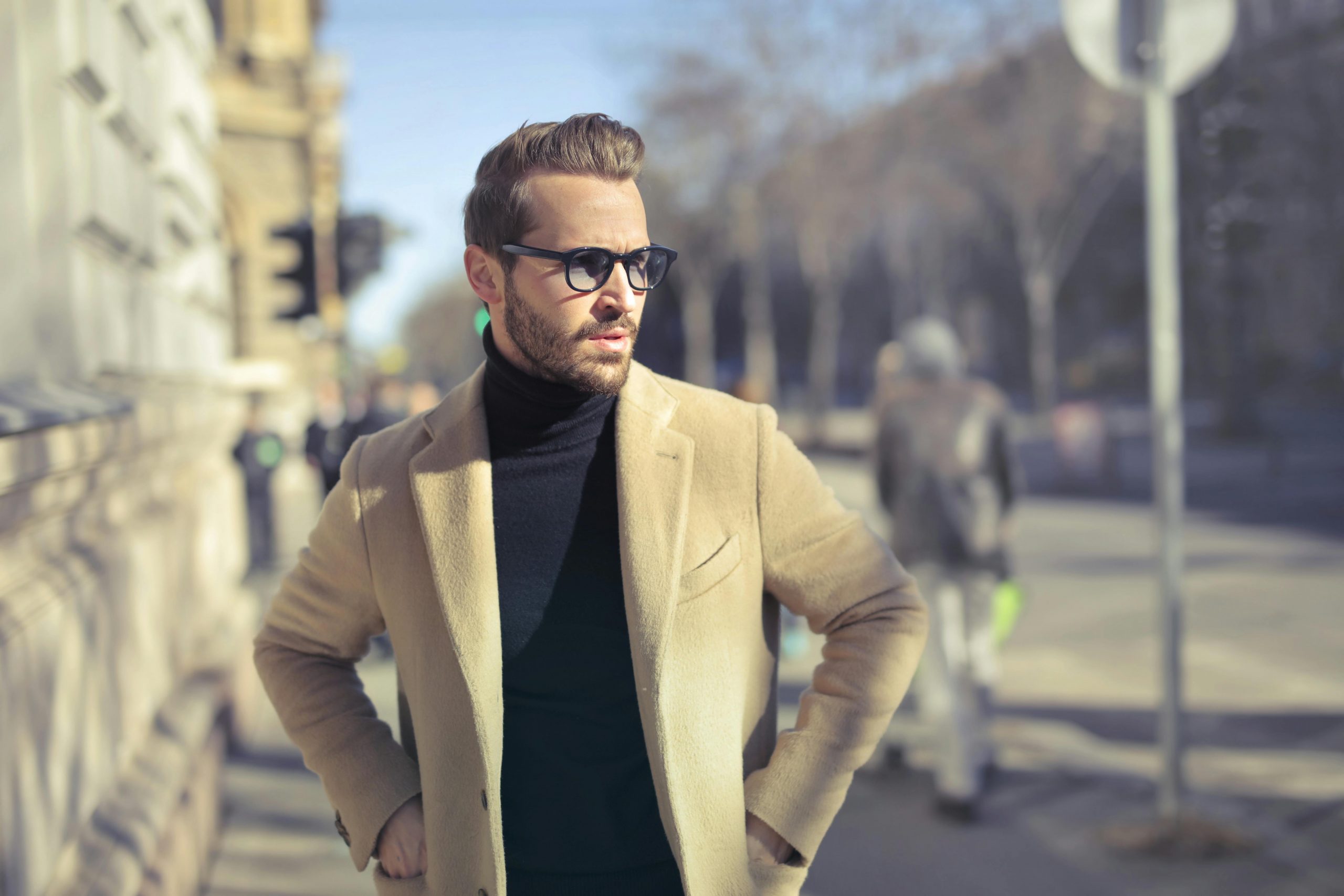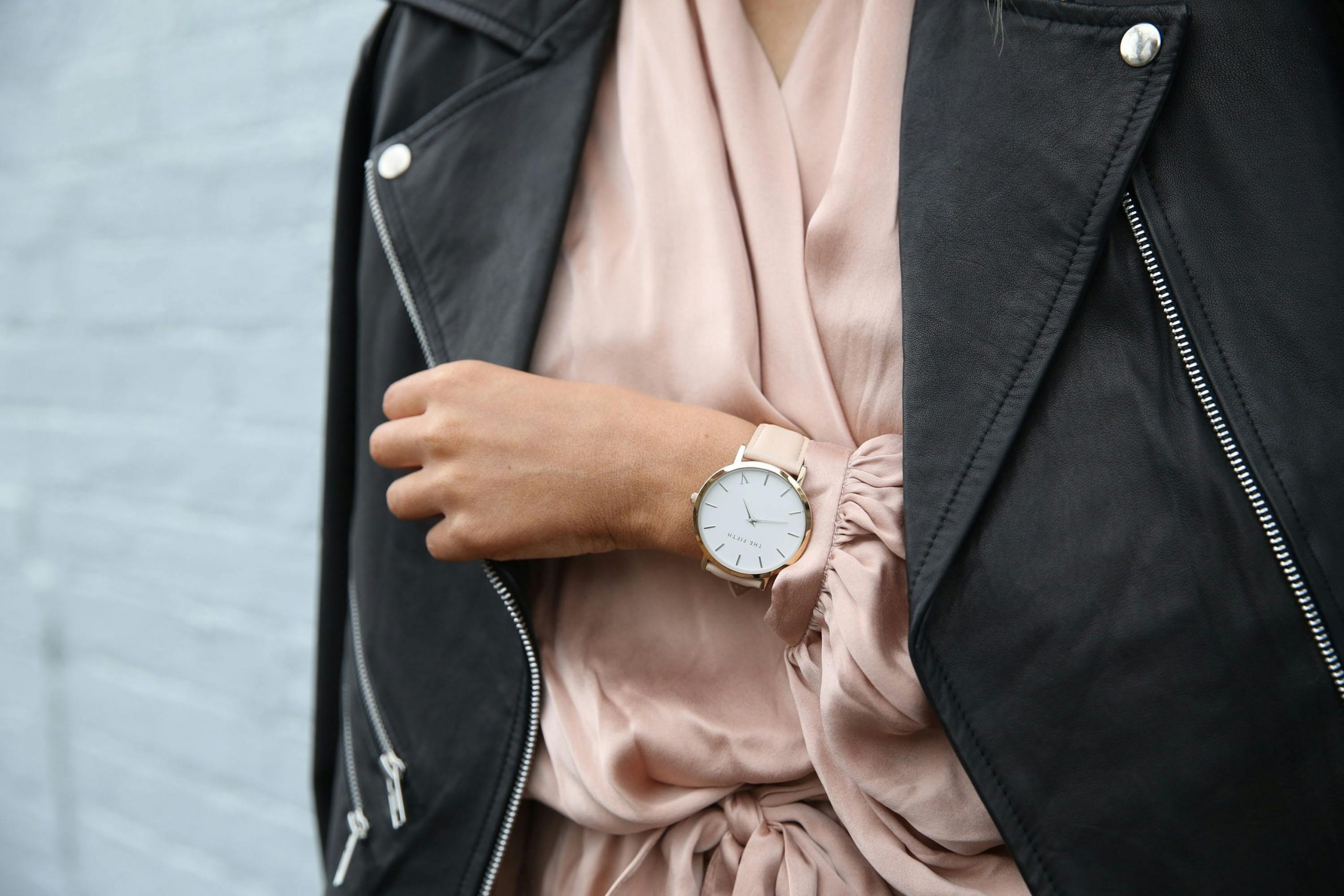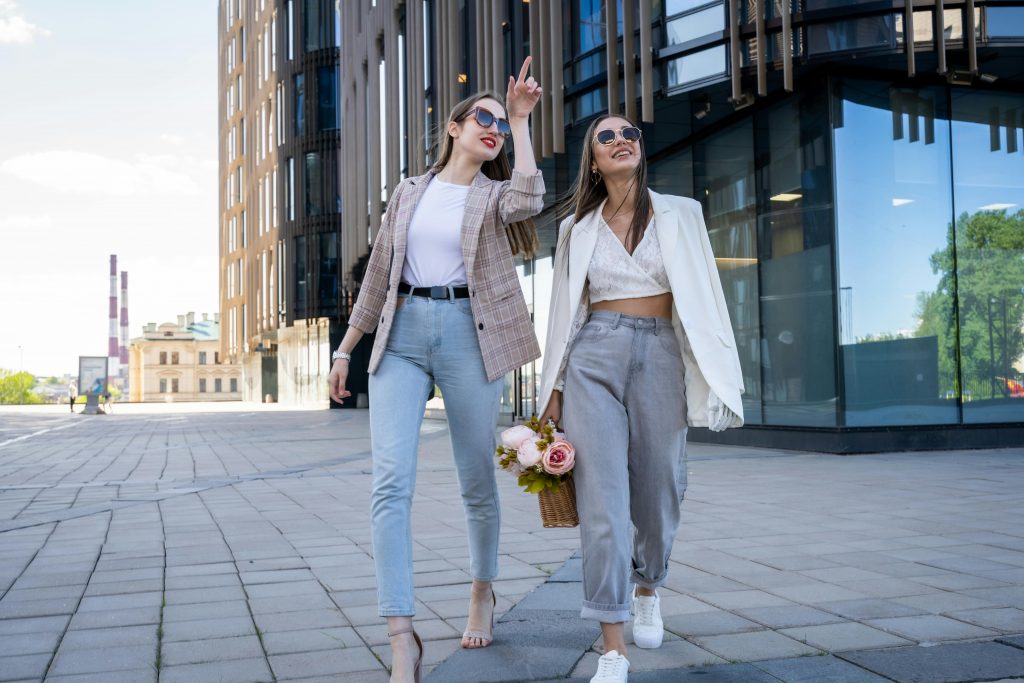There’s been a major buzz online lately about “old money style” versus “new money aesthetic.” You’ve probably seen it all over Instagram, TikTok, and Pinterest — but what do these terms actually mean when it comes to fashion? And more importantly, which vibe matches your personal style?
Whether you’re building a timeless wardrobe or curating bold statement pieces, understanding the differences between these two aesthetics can help you refine your look and own it with confidence. Let’s dive in.
What Is “Old Money Style?”

Old money style is all about understated elegance. Think trust fund chic, country club cool, or “I summer in the Hamptons” energy. It’s classic, refined, and never loud.
Key Characteristics:
- Neutral tones: navy, cream, camel, black, white
- High-quality fabrics: cashmere, wool, linen, silk
- Tailored silhouettes: blazers, chinos, pleated trousers, midi skirts
- Minimal branding: logos are subtle or nonexistent
- Classic accessories: pearls, leather loafers, heirloom watches
This look doesn’t scream wealth—it whispers it.
Example Outfits:
- Men: Navy blazer, white oxford shirt, tan chinos, leather loafers
- Women: Silk blouse, pleated midi skirt, ballet flats, pearl studs
Old money style is about generational confidence. You don’t need to prove you have money because, in theory, your great-grandparents already did.
What Does “New Money Aesthetic” Really Mean?
New money aesthetic is all about flash, trends, and making a statement. It’s aspirational, expressive, and not afraid to flex.
Key Characteristics:
- Bold colors and patterns
- Eye-catching logos and designer branding
- Trendy silhouettes: oversized fits, cutouts, streetwear influence
- High-impact accessories: chunky jewelry, statement bags, luxe sneakers
- Visible luxury: it’s not just about the brand — it’s about being seen
This look is less about tradition and more about individuality, reinvention, and unapologetic self-expression.
Example Outfits:
- Men: Balenciaga hoodie, ripped designer jeans, Air Jordans, Cuban link chain
- Women: Bodycon dress, Gucci belt, platform heels, oversized sunglasses
New money aesthetic is the visual equivalent of “new phone, who dis?”
Side-by-Side: The Fashion Showdown
| Feature | Old Money Style | New Money Aesthetic |
| Vibe | Discreet elegance | Bold and expressive |
| Fabrics | Natural, timeless (wool, linen) | Glossy, stretchy, modern (satin, mesh) |
| Branding | Minimal or hidden | Loud, visible, and intentional |
| Color Palette | Neutrals, navy, pastels | Bright, neon, mixed prints |
| Icons | Carolyn Bessette-Kennedy, Ralph Lauren | Kim Kardashian, Travis Scott |
| Occasions | Country clubs, galas, private schools | VIP events, music festivals, yacht parties |
Why Does This Fashion Divide Matter?
Because style is a language—and the old money vs. new money debate is really about how people want to be seen.
- Old money style says: “I’ve arrived. I’m not trying to impress you.”
- New money aesthetic says: “Look at me. I’ve earned this.”
Neither is wrong. They’re just two different narratives, and both can coexist in the same closet.
Style tip: Your outfit is your message. Pick the aesthetic that best aligns with how you want to present yourself that day — quiet luxury one night, full glam the next.
What’s Driving the Trend Right Now?
Social media has amplified these aesthetics like never before. Gen Z and millennials are romanticizing the quiet luxury of old money through shows like Succession and the fashion choices of Sofia Richie Grainge.
Meanwhile, new money flair is still going strong with influence from streetwear culture, celebrity stylists, and high-profile collaborations (think Louis Vuitton x Pharrell).
Style is more accessible than ever — and more performative. That’s part of the fun.
Is One Better Than the Other?
Honestly? No. It all comes down to personal taste and lifestyle.
Here’s a quick cheat sheet to help you decide where you fit (or if you love both):
Choose Old Money Style if you:
- Prefer timeless over trendy
- Hate flashy logos
- Value investment pieces
- Love classic tailoring
- Admire effortless sophistication
Choose New Money Aesthetic if you:
- Love being on-trend
- Want your clothes to make a statement
- Don’t shy away from bling or logos
- Enjoy experimenting with new styles
- Treat fashion as art and attitude
Can You Mix Old and New Money Looks?

Absolutely — and that’s where the magic happens.
Some of the most stylish people today blend both worlds. Think mixing a crisp white button-down with cargo pants and Yeezys. Or pairing a logo-free cashmere sweater with a chunky designer chain. Blending the aesthetics shows depth, creativity, and confidence.
Mix-and-Match Ideas:
- Old money base + new money accessories
- Classic trench coat + Dior Saddle Bag
- Classic trench coat + Dior Saddle Bag
- New money outfit + old money accents
- Oversized tee + pleated trousers + vintage watch
- Old money silhouette + new money statement
- Cashmere cardigan + leather mini skirt + Balenciaga sneakers
- New money glam + old money restraint
- Sequin blazer + straight-leg chinos + pearl studs
Icons to Watch for Inspiration
If you’re curating your closet or scrolling for mood board inspo, check out these modern-day style icons:
Old Money Vibe:
- Sofia Richie Grainge
- Carolyn Bessette-Kennedy (yes, still!)
- Kate Middleton
- David Beckham (off-duty)
New Money Flair:
- Hailey Bieber (on certain red carpets)
- Lil Baby
- Travis Scott
- Bella Hadid
Even celebs play both sides. That’s how you know both styles are powerful in their own way.
How to Nail Both Looks Like a Pro
Mastering both old money and new money style isn’t just about owning the right pieces — it’s about understanding the attitude, styling choices, and context behind each look. Let’s break down exactly how to pull off each aesthetic with confidence and flair.
Nailing the Old Money Style
The old money look is all about timelessness, restraint, and an air of effortless refinement. If you’ve ever looked up how to dress old money, you already know this look leans heavily on classic tailoring, subdued color palettes, and subtle luxury. Here’s how to rock the look:
Prioritize Tailoring
Old money wardrobes rely on garments that fit perfectly — not tight, but tailored. Get to know your local tailor. A properly fitted blazer or pair of trousers will elevate your entire look.
Choose Timeless Fabrics
Stick to high-quality natural materials like:
- Wool (for suits and coats)
- Linen (especially in warmer months)
- Cashmere (for knitwear and layering)
- Silk (blouses, scarves, or pocket squares)
Stick to a Muted Palette
Think navy, beige, ivory, hunter green, oxblood, and camel. These colors signal wealth without being flashy. Avoid bright tones or trendy hues — subtlety is the goal.
Embrace Minimalism
Keep logos, patterns, and overt designer branding to a minimum. If there is a label, it should be discreet. Your confidence should do the talking.
Invest in “Heirloom Pieces”
Build your wardrobe with quality, versatile staples that never go out of style:
- Crisp white button-down shirts
- Navy or camel trench coats
- Tweed or wool blazers
- Loafers, riding boots, or leather brogues
- Structured handbags in neutral leather tones
Grooming and Details Matter
Old money style isn’t just about clothes — it’s also about polish:
- Keep nails clean and manicured
- Maintain tidy hair or natural waves
- Light makeup for women; a clean shave or neat beard for men
- Neutral fragrance (if any)
Style Scenario
Heading to a casual brunch? Go for a white oxford shirt, relaxed chinos, and brown leather loafers. Add a cashmere sweater draped over your shoulders and tortoiseshell sunglasses — now you’re giving weekend at the estate.
Nailing the New Money Aesthetic
New money fashion is high-energy, expressive, and unapologetically bold. It’s driven by the moment — and isn’t afraid to challenge traditional style rules. Here’s how to make the new money aesthetic work for you:
Go Big on Statements
Start with a centerpiece and build your outfit around it. Think:
- A brightly colored designer coat
- Patterned pants or metallic dresses
- Oversized hoodies or puffers with bold prints
- Luxury sneakers with a twist (think Balenciaga, Off-White, or Prada)
Mix Textures and Trends
Don’t be afraid to combine unexpected materials like:
- Faux leather + satin
- Mesh + denim
- Velvet + nylon
Layering and textural contrast create visual interest and attitude.
Embrace Loud Branding (Strategically)
Yes, monograms and logos are a big part of new money style — but it’s all about balance. Rock a Gucci belt or Fendi bag, but let it shine by keeping other elements in the outfit grounded.
Be Fearless With Color
This aesthetic welcomes bold palettes like neon green, cobalt blue, Barbie pink, or red-on-red. You can color block, go monochrome, or throw in graphic prints — just commit fully to the vibe.
Stack Your Accessories
More is more. Some key pieces:
- Chunky gold chains or layered necklaces
- Diamond-studded watches (real or simulated)
- Statement sunglasses
- Bucket hats, trucker hats, or oversized beanies
- Large branded totes or micro purses
Don’t Forget the Attitude
New money fashion works best when you own the room. Walk tall, make eye contact, and embrace the fact that your outfit is an extension of your personality.
Style Scenario:
Headed to a concert or gallery opening? Try baggy cargo pants, a cropped designer tee, a faux fur jacket, and limited-edition sneakers. Accessorize with stacked jewelry and a bold clutch or mini bag.
Fashion Is Your Financial Fiction
At the end of the day, old money style and new money aesthetic are more than just trends — they’re narratives. One whispers legacy and refinement, the other shouts success and self-expression. And both can be incredibly powerful when worn with confidence.
You don’t have to be born into a dynasty or strike it rich overnight to embrace either look. Fashion gives you the freedom to choose your character, flip the script, or blend genres entirely. Maybe you lean into timeless elegance Monday through Friday, then go full runway rebel on the weekend. That duality? That’s real style.
Whether you’re searching how to dress old money or craving head-to-toe designer with maximum drip, the real key is knowing your why. Are you dressing for tradition, attention, aspiration—or all three?
Style is storytelling. Make sure yours is one worth remembering.

